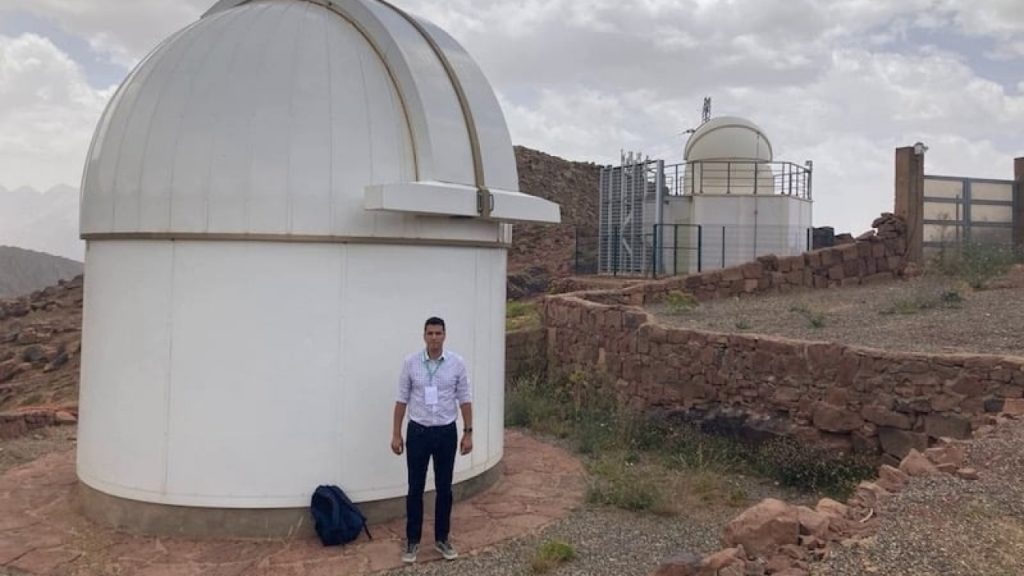doctor. Driss Takir is one of the few Moroccan scientists working for NASA.
He studies asteroid samples brought to Earth by space missions. These samples contain traces of water, organic matter, and even diamonds. They provide a unique view into the early phase of our solar system, which formed 4.6 billion years ago.
Taker, who studied physics in Morocco and obtained a doctorate in planetary science in the United States, is participating in two important space missions: Japan's Hayabusa 2 spacecraft and NASA's OSIRIS-REx spacecraft. Both missions collected samples of primitive asteroids, which have changed little since they formed in the outer solar system. Taker analyzes the spectra and composition of these samples, which resemble carbon meteorites that have fallen to Earth.
The Hayabusa2 spacecraft, launched by the Japan Aerospace Exploration Agency (JAXA) in 2014, headed to asteroid 162173 Ryugu in 2018. Hayabusa2 successfully collected samples from Ryugu and brought them to Earth from a distance of 250 million kilometers in a closed capsule that landed in the Australian outback. In 2020.
Taker was a member of the JAXA Hayabusa2 team, which described Ryugu's spectra and analyzed the returned samples. Analysis of Ryugu samples revealed that this asteroid is rich in water and organic materials, including amino acids, which are the building blocks of proteins and life as we know it. It also contains “pre-polar minerals” and tiny diamonds the size of one nanometer, which may have formed during a nearby supernova explosion before Formation of the solar system. Ryugu's samples have an elemental composition similar to that of the Sun, suggesting that they provide a pure view of the matter from which the solar system was formed.
NASA's mission called “OSIRIS-REx”, which was launched in 2016 to the asteroid (101955) known as “Bennu”, is another important mission in which Tucker participated as a “postdoctoral researcher” during the design and implementation phase of the mission. a task. OSIRIS-REx brought samples from Bennu to Earth last September, and scientists are currently studying these samples, which are expected to be similar to “Ryugu” and carbonaceous “chondrite meteorites” rich in water and carbon. Bennu is also an interesting asteroid because it poses a potential danger to Earth. There is a small possibility that Bennu will collide with Earth in the next century, and OSIRIS-REx will help better understand Bennu's orbit and properties.
Another element of his research is studying the origin and origin of carbon- and water-rich asteroids such as Ryugu and Bennu in the main asteroid belt (between Mars and Jupiter) through ground-based and space-based astronomical observations using a technique called “reflectance spectroscopy” (calculating the percentage of incident sunlight ). Takir uses this technique to measure the reflective properties of asteroids and compare them to those of meteorites found on Earth. In this way he can determine the relationship between asteroids and meteorites and reconstruct the evolution of the solar system. He wants to know how near-Earth asteroids like Ryugu and Bennu were brought to their current orbital positions near Earth by gravitational perturbations within the orbital resonance in the inner main belt between Mars and Jupiter.
Taker is also a member of another Japanese mission called eExploration Martian Moons (MMX), which is ready to launch to recover samples from the Martian moon Phobos. Phobos is one of two small moons of Mars, which may have formed from debris from a large Martian impact or been captured from the main asteroid belt. Scientists will analyze Phobos samples and search for water and organic materials that may have come from Mars or asteroids. The MMX mission will also explore Mars' other moon, Deimos, and study the dynamics of the Martian system.
Takir is proud of his Moroccan heritage and wants to help his country invest in planetary science. He says that Morocco is a famous country in the meteorite community and there is great potential to preserve and study these valuable resources. He points out that Morocco has one of the most vibrant meteorite hunting areas in the world, and that many important meteorites (including those from Mars and the Moon) have been found on Moroccan territory.
He also praises the efforts of his Moroccan colleagues and friends, such as Professor Hasnaa El-Shenaoui Odjahane from Hassan II University in Casablanca, and Professor Zouhair Ben Khaldoun from Cadi Ayyad University in Marrakesh, who are active in collecting and studying these meteorites and characterizing asteroids. He also hopes to be able to inspire young Moroccans to become interested in space and science.

“Coffee buff. Twitter fanatic. Tv practitioner. Social media advocate. Pop culture ninja.”










More Stories
Which can cause an increase in nitrogen.
The Central State Real Estate Agency has no additional space to accommodate Ukrainians.
The oystercatcher, the “unlucky national bird,” is increasingly breeding on rooftops.